How to Quickly Transform a Green Pool into a Clear Oasis
May 30th, 2024
May 30th, 2024
A backyard morning unraveled the mystery—a pool transformed overnight into an emerald expanse, casting an unexpected spell. Green pools, though unsettling, spring up more frequently than one might think. Algae can invade the waters and, if not promptly addressed, turn your oasis into an uninviting lagoon. The reasons for such a transformation vary: a missed maintenance session, unstable weather, or even a forgotten cover.
When my own pool turned into this shade of green, it felt like a scene from a fantasy novel. But, rather than grabbing a sword, I reached for the tools of the trade — testing kits, algaecides, and pool vacuums. This experience taught me the importance of quick action; the longer you wait, the thicker the grip of algae becomes.
This guide isn't just born from textbooks or manuals; it’s a blend of hands-on experience and advice from pool professionals. Within 24 hours, that green menace can be a thing of the past. It’s about understanding the chemistry, making swift decisions, and using the right tools. Whether you're hosting a weekend gathering or just longing for a serene swim, restoring clarity to your pool doesn’t have to be a prolonged ordeal. Let's embark on this transformation journey, turning murky waters clear once again, with steps that are both practical and efficient.
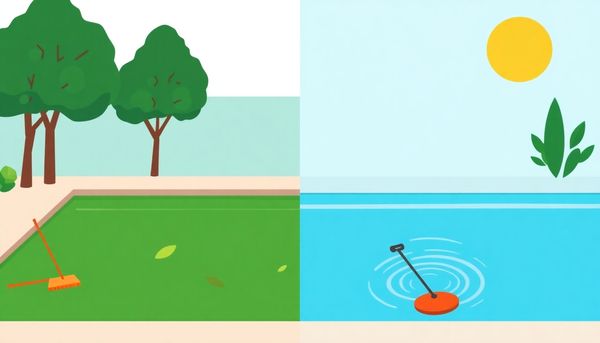
Green water in your pool? That's not just an unsightly nuisance; it's a challenge you can conquer in a snap. Let's set the stage for reclaiming your backyard oasis from the clutches of algae. The first step to banishing this green invader is to arm yourself with a trusty pool brush. Take it from a seasoned pool owner: scrubbing every inch of your pool’s surface can seem as tedious as watching paint dry, but it’s crucial. Dislodge the algae and get it swirling about in the water, ready to be zapped by some serious chlorine power.
Here's a trick passed down among pool enthusiasts: test your water before diving into chlorination. Use those test strips or a liquid kit to check the pH and alkalinity. Trust me, setting these levels straight can mean the difference between a successful shock treatment and a weekend spent wading in murky waters. Adjust them carefully; your chlorine shock will be at its most potent with balanced water.
Now, for the grand finale, bring out the big guns: calcium hypochlorite shock. It’s like sending in the cavalry. For my own pool, which is a hefty 20,000 gallons, a triple shock dosage when the water turned dark green worked like a charm. After dosing, let your filter system work its magic overnight. By morning, you should see a transformation—a cloudy blue pool, a tell-tale sign that the algae has bitten the dust. Keep that filter running and backwash diligently, and soon enough, your pool will be ready for a refreshing swim.
In the battle against a green pool, your trusty brush becomes an indispensable ally. Algae, the stubborn invader, clings to every surface it can find, from the walls to the steps. It's more than just an eyesore; it's a formidable opponent that requires both strategy and effort to defeat. To eliminate algae effectively, brushing isn’t merely a suggestion—it’s a necessity.
Using a wide pool brush, ideally one with a 360-degree reach, makes all the difference. This tool allows you to reach into those sneaky corners and tight crevices where algae love to hide. For those with concrete pools, opting for a heavy-duty algae brush is wise. Its robust bristles can dislodge even the toughest green patches that softer brushes might miss.
A friend once tackled her pool's algae problem by making brushing a priority. She attached the brush to a telescopic pole and methodically scrubbed every inch of her pool, ensuring the algae were swept into suspension. This not only exposes them to chlorine more effectively but also prevents them from reattaching to the surfaces.
As you scrub, the familiar sight of green water gradually transforms. It’s a moment of triumph when the algae release their grip, floating free and vulnerable. This proactive step, combined with proper chemical treatment, significantly speeds up the process of returning your pool to a crystal-clear oasis.
Balancing water chemistry efficiently is akin to fine-tuning a musical instrument. Each element needs to be in harmony with the others to ensure your pool remains a pristine oasis rather than a swampy eyesore. When faced with a green pool, the immediate step is not to panic, but rather to reach for your trusty water testing kit. Testing the pH and alkalinity levels provides a snapshot of the chemical landscape you're dealing with. A pool's pH should ideally hover between 7.4 and 7.6, while alkalinity should fall between 80-120 parts per million (ppm).
Once you've identified any disparities, adjustments are necessary. If alkalinity is too high, it can throw off your pH balance, rendering your chlorine less effective against algae. Start by reducing alkalinity with an appropriate buffer, often bringing the pH into line as well. Remember, a well-balanced pool is a formidable adversary to algae.
In my own pool-maintenance adventures, I learned that treating a pool is much like baking a cake: precise measurements lead to perfect results. On a blazingly hot summer day, I found myself battling a murky green menace. After carefully adjusting the alkalinity and pH, my pool water transformed overnight from a dull, sickly green to a promising cloudy blue. The key is patience and precision—test, adjust, and test again. With these steps meticulously followed, your pool's water chemistry will stand as a sentinel against future algae invasions.
Gazing out at a murky green pool can unsettle even the most seasoned pool owner. Yet, with an arsenal of the right techniques, transforming that swamp into a sparkling oasis overnight is very achievable. The star player in this transformation saga is an intensified chlorine shock treatment. Dive straight into the task by understanding the power of chlorine. It's your best ally against algae, so when your pool turns green, ramping up the dosage is crucial.
Begin by selecting a shock containing at least 70% available chlorine, preferably calcium hypochlorite. This potent form of chlorine is adept at tackling stubborn algae blooms. While a typical shock treatment uses one pound of shock per 10,000 gallons of water, a green invasion demands a more aggressive approach. If your pool resembles a witch's cauldron, consider doubling or even tripling that dose.
Timing is everything, so plan to administer the shock after the sun dips below the horizon. Chlorine dissipates quickly under direct sunlight, so nighttime treatments are more effective. Once the shock is in, let your pool's filtration system work its magic, running continuously for 24 hours to ensure thorough circulation and filtration. If that morning light reveals stubborn hues of green, another round of shock might be necessary. The goal? A glorious shift to a cloudy blue, signaling that the algae have met their match.
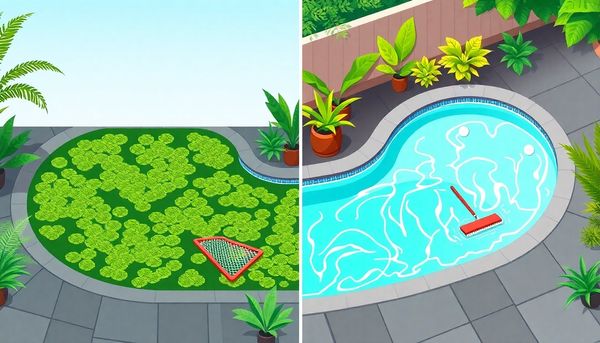
Chasing down those pesky algae in your pool is like embarking on a quest. They cling stubbornly to every surface, but armed with the right brush, you're more than ready for the challenge. Your mission begins with a trusty telescopic pole, equipped with a wide pool brush that promises a 360-degree reach. As you plunge the brush into the water, you’re not just scrubbing away algae; you’re setting the stage for a crystal-clear pool.
Each stroke of the brush serves a purpose. Think of it as waking up the algae from their comfortable slumber on the pool's walls and floor. By stirring them into suspension, you’re giving chlorine the upper hand. This dance between brush and algae happens across all surfaces—steps, crevices, and corners that are often overlooked. The right brush, particularly one designed for concrete pools, transforms this task from a painstaking chore into a strategic strike.
In the past, I underestimated this step. The algae seemed harmless, just a slight green tint to the water. Skipping the scrubbing led to more headaches and longer days. The lesson was clear: a little elbow grease now saves a world of trouble later. After all, the brush is your ally, ensuring every nook and cranny of your pool is free of algae’s grasp, setting the stage for the chlorine to do its magic.
Before embarking on your quest to reclaim your pool from the clutches of stubborn algae, assembling your toolkit is not just advisable—it's essential. Having the right tools at your disposal can turn what might seem like a Herculean task into a manageable part of your day. Imagine gearing up for a hike; you wouldn’t set out without a sturdy pair of boots, a map, and a sense of direction. Similarly, tackling a green pool demands a strategic approach.
Begin by gathering a robust telescopic pole, an indispensable ally in reaching every nook and cranny. Pair it with a wide pool brush, ideally one that offers 360-degree swivel capabilities. Such a tool is perfect for scrubbing the pool’s walls and floor, dislodging algae and allowing your chlorine treatment to work its magic. For those with concrete pools, an algae brush with stiff bristles will help tackle the most stubborn growths.
Next, arm yourself with a reliable water testing kit. Whether you opt for test strips or a liquid kit, precision is key. This will guide you in adjusting pH and alkalinity levels, ensuring they’re primed for effective chlorination. Consider this your compass, steering the chemical balance of your watery oasis.
Finally, stock up on pool shock treatments—calcium hypochlorite with at least 70% available chlorine is ideal. Having these tools on hand not only facilitates the immediate task but also serves as a foundation for ongoing pool care. With preparation, a green pool can swiftly transform from an eyesore into an inviting escape.
Balancing your pool's water chemistry is akin to a dance that requires precision and attention. Think of your pool as a delicate ecosystem where every chemical plays a vital role. The first step in this balance is testing. Equip yourself with reliable test strips or a liquid test kit. These tools are your best friends in identifying the current pH and alkalinity levels of your pool. Ideally, your pH should hover between 7.2 and 7.6, allowing chlorine to work its magic in the most effective manner.
Once the numbers are in, it’s time to act. If your pH or alkalinity is off-kilter, make adjustments promptly. Start with alkalinity, as it acts as a buffer for pH levels. Lower it using muriatic acid or sodium bisulfate if it’s too high, or raise it with baking soda if it’s too low. Once the alkalinity is set, fine-tune the pH. This might require similar agents, but sometimes the alkalinity adjustment does the trick for pH as well.
On one summer afternoon, my neighbor found her pool overtaken by a green menace. After a quick test and some careful balancing, she was back to crystal-clear waters by the next morning. It’s a testament to the power of chemistry and a reminder that maintaining these levels doesn’t just clear the algae—it fortifies your pool against future invasions.
Transforming a murky green pool into a sparkling oasis in just 24 hours might sound like magic, but effective shock treatment turns that magic into reality. When I first faced the daunting task of rescuing a friend's neglected pool, watching the water shift from swampy green to a refreshing blue was nothing short of a revelation. It's all about understanding the chemistry and timing.
Start by selecting a potent chlorine-based shock, specifically calcium hypochlorite with at least 70% available chlorine. This powerhouse chemical is your best ally in the battle against algae, working swiftly to annihilate the green invaders. Timing here is crucial—apply the shock treatment as the sun dips below the horizon. Sunlight diminishes chlorine’s efficacy, so nighttime application ensures that your chlorine packs its strongest punch.
Now, don't skimp on the shock. A standard treatment won't suffice for a green pool; instead, double or triple the dose, depending on the severity of the algae bloom. For example, if your pool holds 20,000 gallons and resembles a woodland pond, you might need six bags instead of the usual two. This intensified approach ensures the algae is thoroughly eradicated.
Once the shock is in, keep that filter running tirelessly—ideally, 24/7. This constant circulation helps clear out the wreckage of your successful chemical onslaught. By morning, the water should shift from ghastly green to a promising cloudy blue, signaling a job well done. Your pool is on its way back to its former glory, ready to welcome swimmers once again.
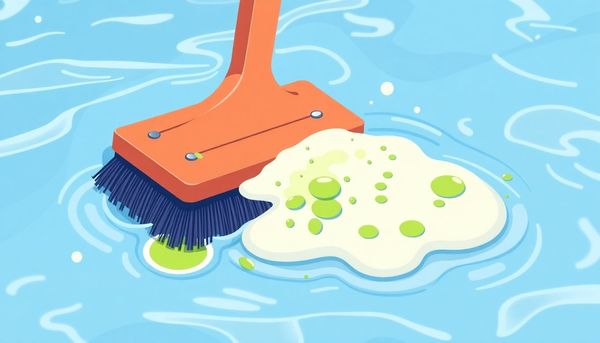
Swimming in a green pool might sound like an adventure from a fantasy novel, but when it's your own backyard oasis, the murky waters lose their charm. Enter the power of pool shock—a tool that, when used correctly, transforms that swamp into a crystal-clear haven. The magic lies in understanding the right dose and timing. This isn't just about dumping chemicals and hoping for the best; it's about strategy.
Start by determining the shade of green you're contending with. A light pea green signals a simpler fight, whereas a deep, dark green requires a more aggressive approach. Use a shock that boasts at least 70% available chlorine, preferably calcium hypochlorite. If you're working with a 20,000-gallon pool sporting a deep green hue, prepare for a triple shock—about six pounds of the potent stuff.
Timing is your ally. Nighttime is ideal for shocking, as the sun won't burn off the chlorine before it does its job. Once you've spread the shock evenly across the pool's surface, let the filter system work its magic overnight, ideally running for a full 24 hours to ensure all particles are captured. Should the morning light reveal stubborn green patches, a second shock may be in order. Patience and persistence are key. Once achieved, that cloudy blue hue is your victory flag, signaling the defeat of algae and the return of poolside bliss.
Staring into a green pool is like looking at a swamp instead of your backyard oasis. But fear not—there's no need to drain the pool and start from scratch. The culprit behind your pool's murky transformation is algae, a sneaky invader that thrives in low-chlorine environments. Combatting this nuisance requires a strategic approach, and with the right tools, you can win the battle in just 24 hours.
The first line of defense is a sturdy pool brush. Attaching it to a telescopic pole, scrub every surface from walls to steps to loosen the algae's stubborn grip. Think of it as waking the beast, setting it afloat, and making it more vulnerable to your next move—the chlorine shock. This is where the magic happens. Dosing your pool with a high-chlorine shock breaks down algae and restores clarity. If your pool resembles a forest pond, don’t hesitate to double or triple the shock depending on its size and the depth of green.
Timing is crucial; nighttime is the right time for shocking. This gives chlorine the opportunity to work without interference from the sun's UV rays. Running your filter system nonstop will help sift out the dead algae and restore balance. By morning, you should see a cloudy blue hue—a sign of victory.
In this process, always keep an eye on pH and alkalinity levels. Balance them before shocking to ensure the chemicals perform at their peak. With these steps, your pool will quickly transform from a green eyesore into a sparkling centerpiece ready for cannonballs and lazy floats.
Balancing the water chemistry is a pivotal step in transforming your emerald pool back to its sparkling self. Start by grabbing a reliable test kit or test strips to measure your pool's current pH and alkalinity levels. It’s like checking the vitals before a big match; without the right balance, your efforts might fall short. Ideal pH should sit between 7.2 and 7.6, while alkalinity should range from 80 to 120 ppm. These numbers are crucial because they set the stage for the chlorine to do its job effectively.
Once you've got the readings, you might find your pH is too high, causing the chlorine to become less effective. In this case, add a pH decreaser, following the manufacturer's instructions meticulously. I remember once skipping this step, thinking the shock treatment would handle everything, but I ended up with a pool that was clear as mud.
Alkalinity acts as a buffer for pH, so adjust this first. Using a product like sodium bicarbonate can raise it, while muriatic acid helps bring it down. Think of alkalinity as the foundation; if it's shaky, the structure will wobble. Once the chemistry is spot on, your chlorine shock can swoop in like a superhero, annihilating algae efficiently. It's this fine-tuning that ensures your pool’s recovery is swift and smooth, setting the stage for the final steps in the battle against the green menace.
To keep your pool water crystal clear and algae-free long after the initial cleanup, a few consistent habits are key. I remember a time when I neglected my pool for just a week during vacation and returned to a murky, green mess. It taught me a valuable lesson: prevention is always easier than the cure.
Begin with regular water testing. At least once a week, but ideally every few days, check your pool's pH, alkalinity, and chlorine levels using reliable test strips or a liquid test kit. This routine helps you catch any imbalances before they spiral into a full-blown algae invasion. Just imagine the peace of mind knowing your next swim won't be sabotaged by unforeseen contaminants.
Next, ensure your chlorine levels remain stable. Chlorine is your first line of defense against algae. If levels drop, algae sees an opening to thrive. Consider installing a chlorine dispenser to automate this process, especially if you're prone to forgetting.
Additionally, occasional use of a copper-free algaecide can serve as an extra precaution. While not necessary if chlorine levels are maintained, it can offer added protection, acting as a safety net for your water chemistry.
Finally, maintain a clean pool environment. Regularly skim, vacuum, and brush your pool surfaces to remove debris that could harbor algae spores. I’ve found that making this a family activity not only maintains the pool but also turns maintenance into an enjoyable weekend ritual.
By embracing these routines, you ensure the pool remains a clear, inviting oasis, ready for a refreshing dip whenever you are.
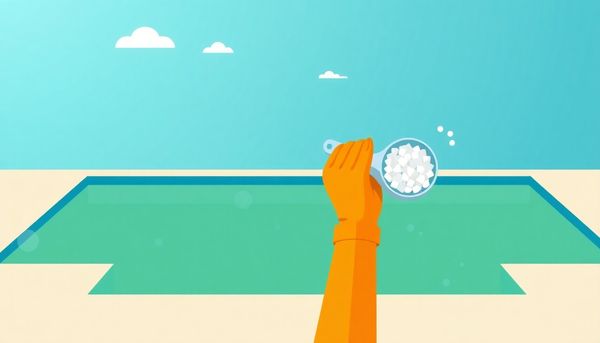
Balancing pool chemistry is akin to fine-tuning a musical instrument—it’s all about harmony. In the realm of pool care, this symphony begins with regular testing. Grab your test strips or liquid test kit and check the pH and alkalinity levels. These readings are the cornerstone of effective algae treatment. Should they show an imbalance, adjustments are necessary; high levels demand a reduction to ensure your shock treatment performs at its peak efficiency.
Think back to a summer cookout where the grill just wouldn’t light because the fuel was off. Similarly, if your pool’s pH and alkalinity are out of sync, the chlorine won’t ignite against algae. Start by adjusting alkalinity; this can often bring the pH in line. But if your pH remains stubborn, it’ll need a nudge, too.
Once these elements are harmonized, your shock treatment stands ready to take center stage. It becomes a potent weapon against the green invaders. The patience you invest here pays dividends, ensuring the chlorine has the best chance to clear your pool of algae.
Reflect on the satisfaction of hitting the perfect note. Balanced chemistry not only aids in immediate algae combat but also sets the stage for long-term clarity. A well-calibrated pool is more than just clear water; it’s a promise of effortless maintenance and more days basking in the sun without the green gloom hanging overhead.
Turning a green pool into a blue oasis in just 24 hours might sound ambitious, but it's entirely possible. When combating algae, the first step is to understand your adversary. Algae thrive in conditions where chlorine levels drop, turning your pool into a veritable swamp. The key is to strike hard and fast with a robust shock treatment. Opt for a shock with at least 70% available chlorine, like calcium hypochlorite. This potent substance dramatically raises chlorine levels, effectively annihilating algae blooms.
My friend Alex once faced the daunting task of dealing with a murky green pool just days before a backyard party. With a strategy in hand, we began by scrubbing the pool's surfaces vigorously with an algae brush—no corner left untouched. This action dislodged stubborn algae, making it easier for the chlorine to do its job. Next, we tackled the pool's water chemistry. Using test strips, we meticulously balanced the pH and alkalinity, ensuring the shock treatment's maximum effectiveness.
Alex's pool transformed from a deep green to a cloudy blue overnight. The secret? Maintaining a continuous filtration process, which ran tirelessly for 24 hours, filtering out dead algae remains. Finally, a pool clarifier helped clear the remaining haze, leaving the water pristine. Now, Alex swears by consistent water testing—preemptively striking against any unwanted green invaders. So, with diligence and the right approach, your pool can sparkle again, ready for those sun-drenched swims.
There’s nothing quite like the anticipation of a swim, especially when the sun is shining, and your pool is calling. But what if instead of clear blue, you’re greeted by a murky green? Let's unravel the key to transforming that water in under a day. First stop: optimizing your chlorine levels.
Chlorine is your pool’s unsung hero—relentlessly battling bacteria and algae to keep your water pristine. But when algae takes over, it’s often a sign that chlorine has been sidelined. Start by grabbing those trusty test strips or a liquid kit to measure your pool’s chemistry. You'll need a clear picture of your current chlorine levels. If they’re lower than recommended, it’s time to take action.
The goal is to supercharge your pool with a potent dose of chlorine, specifically calcium hypochlorite shock, which is your best bet against algae. Depending on the shade of green you're dealing with, you may need to double or even triple your usual shock dosage. For instance, a pool turning emerald might need three times the shock treatment—a powerful punch to knock out algae’s grip.
Once your chlorine is added, let it work its magic overnight, running your filter system continuously. Remember, night is your ally here since UV rays can diminish chlorine’s effectiveness during the day. The patience will pay off when you wake up to a pool that’s shedding its green hues. With optimized chlorine levels, you’re not just clearing your pool; you’re reclaiming your summer oasis.
Balancing the chemistry of your pool isn't just a chore—it’s an art. Keeping your pool's water in perfect chemical harmony ensures it remains a sparkling oasis and not a murky swamp. Let's explore the nuances of maintaining this delicate balance.
First, let's talk pH. You want to hit that sweet spot of 7.2 to 7.6. Too high, and your chlorine struggles; too low, and the water becomes corrosive, potentially damaging pool equipment. Just last summer, my friend John found himself battling a persistent algae problem because his pH had crept too high. A quick adjustment, and his pool was back to its shimmering best in no time.
Next, consider the alkalinity, the backbone of your pool's chemistry. This should be between 80 and 120 parts per million (ppm). Alkalinity acts as a buffer for pH, preventing sudden changes that could make your pool water unfriendly. Think of it as the unsung hero of your pool care routine.
And don't forget about calcium hardness. While it might sound like a trivial detail, keeping calcium levels between 200 and 400 ppm ensures your pool surfaces remain smooth and intact. My neighbor once neglected this, and his pool tiles began to deteriorate—an expensive oversight.
Regular testing is your best ally. Invest in a reliable test kit, and make it a weekly ritual. By staying vigilant and proactive, you'll safeguard your pool against those pesky green invaders and enjoy a crystal-clear swim all season long.
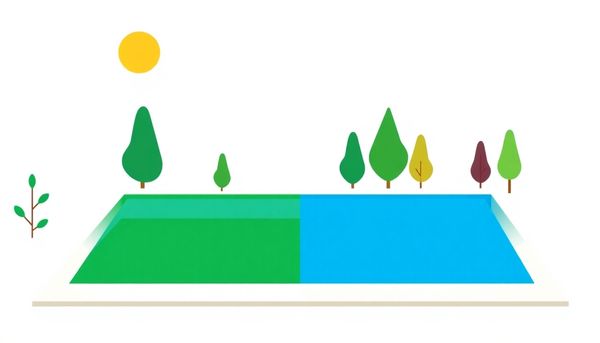
Keeping your pool's water as clear as a mountain spring is a bit like tending a garden. It's all about consistent care and timely interventions. Once you've battled the green beast and restored your pool to its gleaming state, the real challenge lies in maintaining that pristine condition. Regular testing becomes your best ally. By checking the chlorine levels every couple of days, you ensure your pool remains inhospitable to algae. I once had a pool turn emerald green because I skipped a week—never again!
Beyond just testing, it's important to keep an eye on any imbalance in pH or alkalinity. These are the silent troublemakers that can undermine your chlorine's effectiveness. Adjust these levels at the first sign of trouble, and you'll find that your pool stays in harmony. For instance, a quick pH adjustment rescued a friend's pool from a potential algae takeover last summer.
Adding a copper-free algaecide to your routine offers an extra layer of defense but remember, your primary focus should be maintaining proper sanitizer levels. Like a diligent lifeguard, they keep unwanted guests at bay. Forget about chasing phosphates; it's a futile quest better suited to myths. Instead, focus on what truly matters: regular sanitization and balance. By sticking to these simple practices, you'll spend less time on maintenance and more time enjoying perfectly clear water, just as it should be.
A battle with pool algae can feel like a showdown with a stubborn opponent. One summer, my own backyard oasis turned swamp-like overnight after a power outage stopped the filtration system. The sight of green water was a jarring wake-up call, but it didn't stand a chance for long. First, I armed myself with a sturdy pool brush, tackling every corner and edge to dislodge lingering algae clinging to the surfaces. This wasn't just exercise; it was about freeing those pesky particles so the chlorine could do its job more effectively.
Next, I reached for the test strips, a trusty sidekick in this battle. Testing revealed that my pH levels were slightly off, a common culprit for algae woes. Adjusting the alkalinity and pH ensured that when I unleashed the pool shock, it would have maximum impact. Speaking of shock, I didn't skimp—tripling the usual dose of calcium hypochlorite, a powerhouse in the algae-killing department. Timing was key, with the treatment hitting the pool under the cover of darkness to prevent the sun from burning off the potent chlorine.
With the shock treatment underway, the filtration system worked tirelessly around the clock. By the next morning, the pool had transformed to a cloudy blue, a sure sign that the algae had been vanquished. The final step was to keep the filter running and use a pool clarifier to speed up the clearing process. This strategy, combined with diligent maintenance, ensures a sparkling pool ready for enjoyment.
Tending to a green pool resembles a chemistry experiment more than a leisurely afternoon dip. The secret lies in mastering the delicate balance of your pool's water chemistry. Begin by equipping yourself with a reliable test kit—your best ally in this mission. Checking for pH and alkalinity levels is crucial. You want to ensure your pool's pH hovers between 7.2 and 7.6, providing the perfect environment for chlorine to work its magic.
Perhaps you've noticed your pool's alkalinity isn't quite right. If it's high, it might just be causing pH instability. Adjust it by using sodium bicarbonate or an alkalinity increaser, followed by a retest. Once the alkalinity is stabilized, any necessary pH adjustments become a breeze.
While it's tempting to rush the process, patience is key. Think back to your chemistry classes: rushing through titration never ended well, right? By taking the time to correctly balance your pool's pH and alkalinity, you’re setting the stage for the chlorine to efficiently annihilate any lurking algae.
Once these levels are optimal, it’s time for the main event: shocking the pool. Remember, the right water chemistry not only clears the current green gloom but also fortifies your pool against future algae invasions. Trust this process, and your pool will soon be the vibrant blue oasis it was meant to be.
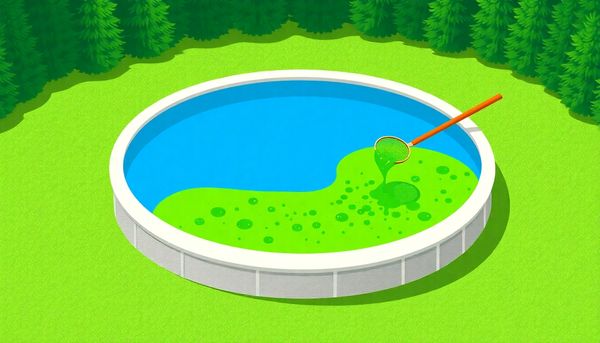
This article provided insights into maintaining your pool. Start your pool care journey today!
Want to become a pool maintenance expert? Our free Pool School course covers everything you need to know about pool care. From basic maintenance to advanced troubleshooting, you'll learn how to:
Join over 10,000 pool owners who have already transformed their pool care routine. Get started with our free Pool School course today!